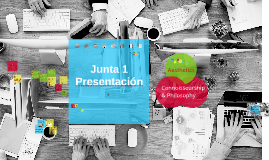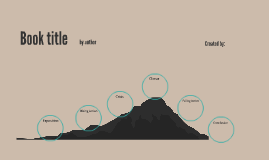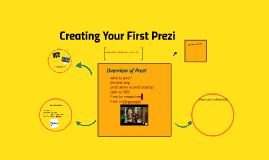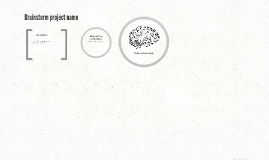Brainstorm prezi template
Transcript: Modernism- A late 19th century movement which stood for emancipating human kind from confining traditions, a movement which engendered the secular Western society, and effected art as well as art history. Abstraction- A movement in art which removes itself from representation Expressionism- A movement in which artists attempt to visually express their inner emotions. Iconography- Visuals and symbols which represent a person, culture or movement. Empiricism- One approach to the study of art history, influenced by the scientific method of accumulating data and basing theories on these collected facts. Idealism- The second approach to the study of art history in which it was accepted that the experience of the world gave birth to the creations inspired from it, meaning that each new creation of art was simply a new representation of the spirit of the world which we lived. Heautonomy is a principle of reflective judgement according to which the subject gives itself a law ‘not to nature (as autonomy), but to itself (as heautonomy), to guide its reflection upon nature’ Hermeneutics- covers both the first order art and the second order theory of understanding and interpretation of linguistic and non-linguistic expressions. As a theory of interpretation, the hermeneutic tradition stretches all the way back to ancient Greek philosophy. In the course of the Middle Ages and the Renaissance, hermeneutics emerges as a crucial branch of Biblical studies. Later on, it comes to include the study of ancient and classic cultures. Metaphysical- of or relating to things that are thought to exist but that cannot be seen Culture - the beliefs, customs, arts, etc., of a particular society, group, place, or time Pathological - being such to a degree that is extreme, excessive, or markedly abnormal Theory of Storms - role of the ‘historical crisis’ in Jacob Burckhardt’s theory of history which examined how Burckhardt praised the ‘crisis’ was a way in which it could accelerate historical processes Connoisseurship- A connoisseur is a person who pays close observation to the unique details within an art piece which are attributed to the uniqueness of the artist. Applying connoiseurship as a method, an art historian would work in a similar fashion, however the method is usually in combination with other methods. Hegel's Collapse- Romantic painting declines when art begins to interest itself exclusively with secular matters Profound subjects were replaced by everyday life Hegel is scathed over the art of his own time and feels it lacked a true spiritual necessity Art he claims has ran its course and would now be the role of the philosopher to articulate the “Absolute Idea” Even though Hegel believes that art ceased to be the supreme need of the spirit he still remained that it may only mean that at some unknown future point art might become important again Hegel’s Aesthetics is not the funeral oration for art that it has sometimes been referenced Hegel developed two important questions that art history raises What makes art historically and socially specific? What motivates changes in art over time Hegel’s assumption that art’s evolution was caused by a metaphysical force (the Absolute Idea) was unverifiable and led to an over generalized account of art His theories did not adequately link artistic expression with social conditions that prevailed at any given art piece’s time And finally metaphysics of the individual is described by Rumohr as "the expression of the individual unity that comes from the unique conjunction of subjective and objective forces." Rumohr was noted for breaking away from Hegel and Winckelmann's approach to the arts. Anthropology and/as Art History, 151-154 This essay may offer the simplest means of understanding art historical application. It approaches art by “charting the progressive evolution of national, ethnic, racial character, ‘spirit’, intelligence, or mentality…that stylistic change over time and place was symptomatic of broader or deeper changes in meaning or significance; changes in individual or collective mentality or will.” Simply put, cultural (in its many capacities drives changes in the arts). “Change in art comes about primarily as a result of the unfolding logic or trajectory of the system of forms itself.” In short, changes in art are smaller steps in resolving cultural and artistic problems. Temas a ver: Quien soy Dinamica 1 Reglas del juego Dinamica 2 The two main formalist art historians were Heinrich Wolfflin and Riegl Heinrich Wolfflin • Born in Switzerland and studied under Jakob Burckhardt • Later became Burckhardts successor • Built his art history upon the psychology of perception • Wrote Principles of Art History, often considered the most influential book in the field of art history • Was known for being one of the first to use dual projection in his lectures. Comparing two paintings side by side. • He would later criticize the empathy theory that he once supported. Claiming that

















